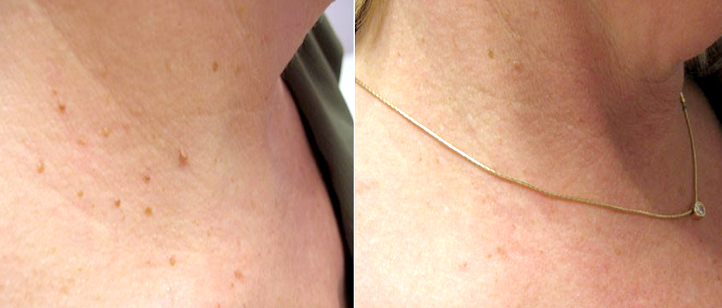
What are skin tags?
Skin tags otherwise called a cutaneous papilloma, acrochordon, cuntaneous tag, fibroepithelial polyp, fibro molluscum, papilloma colli, delicate fibroma, and templeton skin tag are little tags of skin which may have a peduncle (stalk) and look like little bits of delicate hanging skin.
They can show up on any part of the skins surface yet are all the more usually found in ranges where the skin rubs. Some normal ranges are: Eyelids, Axillae (armpits), under the bosoms, crotch, upper mid-section, and neck.
What causes skin tags?
Skin tags are extremely regular and as a rule happen after midlife. They are brought about by clusters of collagen and veins which are caught inside thicker bits of skin.
They are accepted to be the aftereffect of skin rubbing against skin. That is the reason they are by and large found in skin wrinkles and creases.
As indicated by the National Institute of Health around 46% of individuals have skin tags. There is a conviction that a causal hereditary segment exists. Individuals with close relatives who have skin tags will probably create them themselves.
Will more developments happen when I evacuate a skin tag?
This is a typical misguided judgment. There is no logical confirmation proposing the expulsion of skin tags brings about the multiplication of more developments. The pathology of these developments does not propose these developments “seed,” which implies after expulsion new sores have its spot. In a few people, new developments are totally ordinary. Actually, numerous grown-ups have yearly or occasional evacuation medicines to annihilate recently shaped skin tags.
Are skin tags infectious?
There is no confirmation proposing you can “get” skin tags from human contact. The probability of getting skin tags or transmitting them to someone else is nearly non-existent. Try not to misconstrue skin tags for warts. Warts are created by the HPV infection, and are exceedingly infectious. While preparatory information has discovered select skin tags to contain the innocuous HPV-6 or HPV-11 infection, this does not propose all skin tags are a result of a viral disease.
Is the system excruciating?
Most patients will feel negligible inconvenience amid the methodology. The inclination is depicted as a powerless electric current matched with some warmth.
What would I be able to expect amid the treatment?
The professional applies a hub to the skin tag that creates a RF (radio recurrence) toward the end. This hub will touch every tag at the base creating the tissue to coagulate and shapes a boundary to blood stream that eventually disposes of telangiactasia. After treatment the skin tag will go away and turn dull in shading, tumbling off inside a couple days.
To what extent does the technique take?
Contingent upon the extent of the skin tag, littler tags will take some place between 10-12 minutes to evacuate. Bigger skin tags will take between 20-30 minutes.
